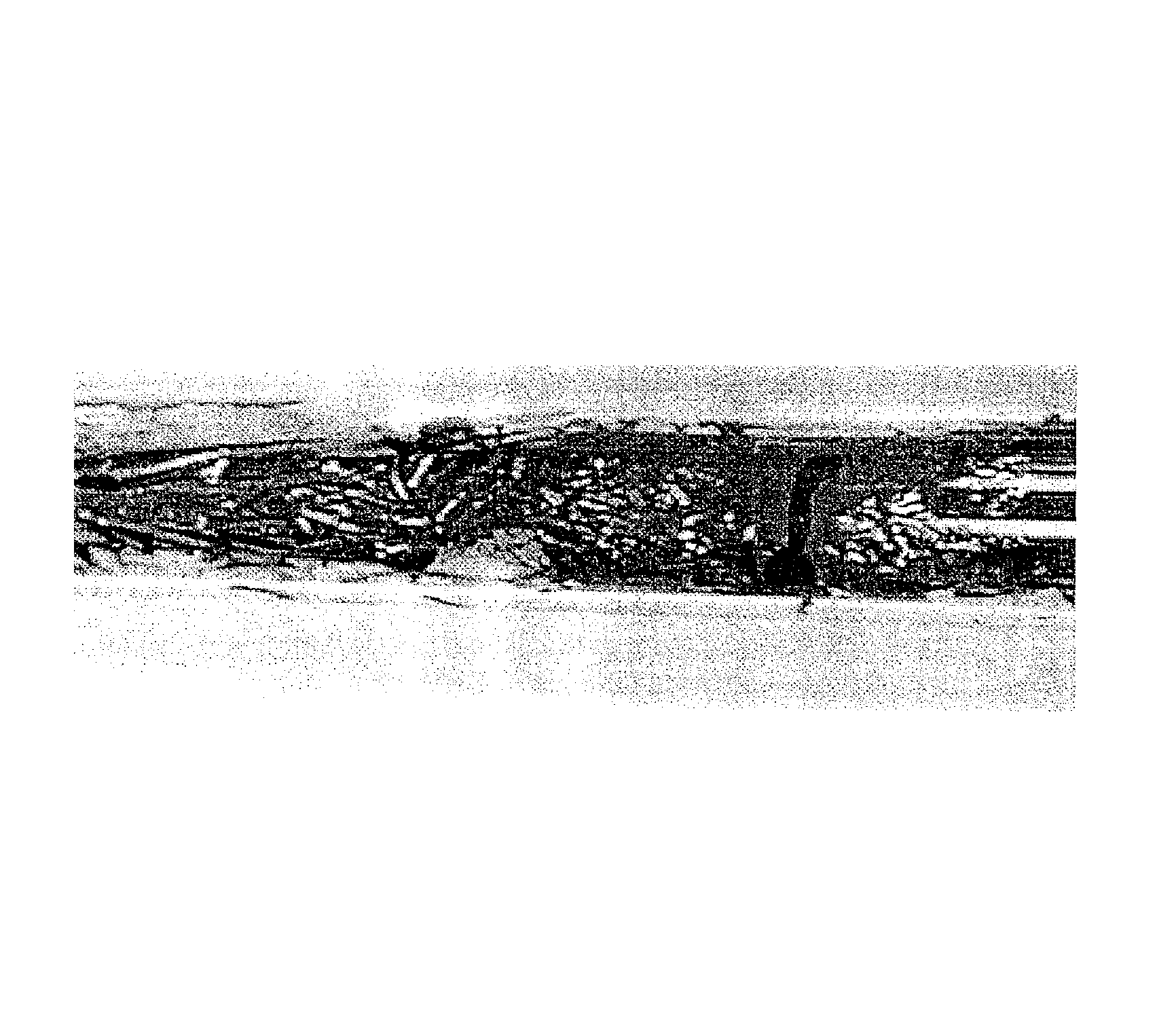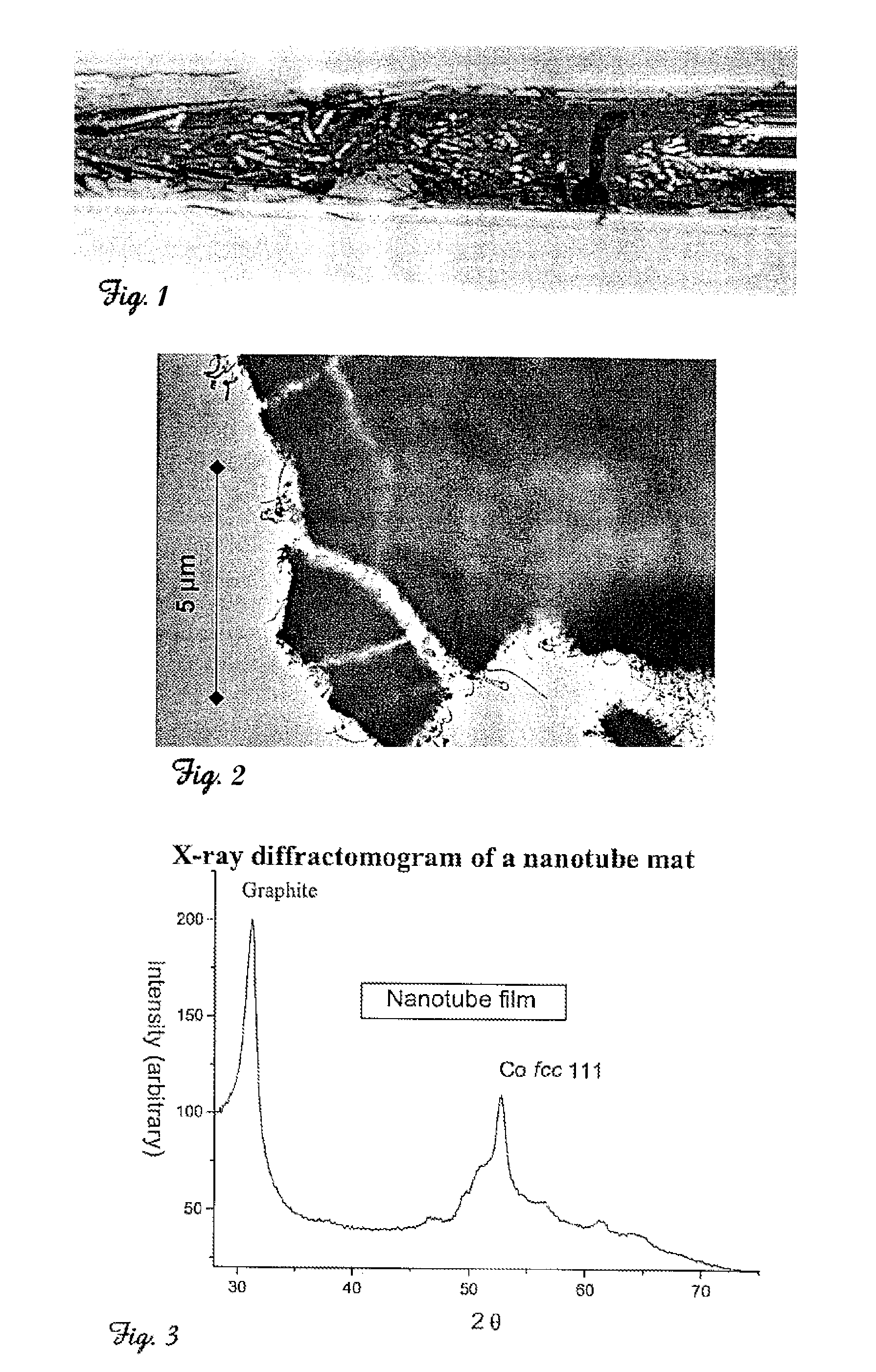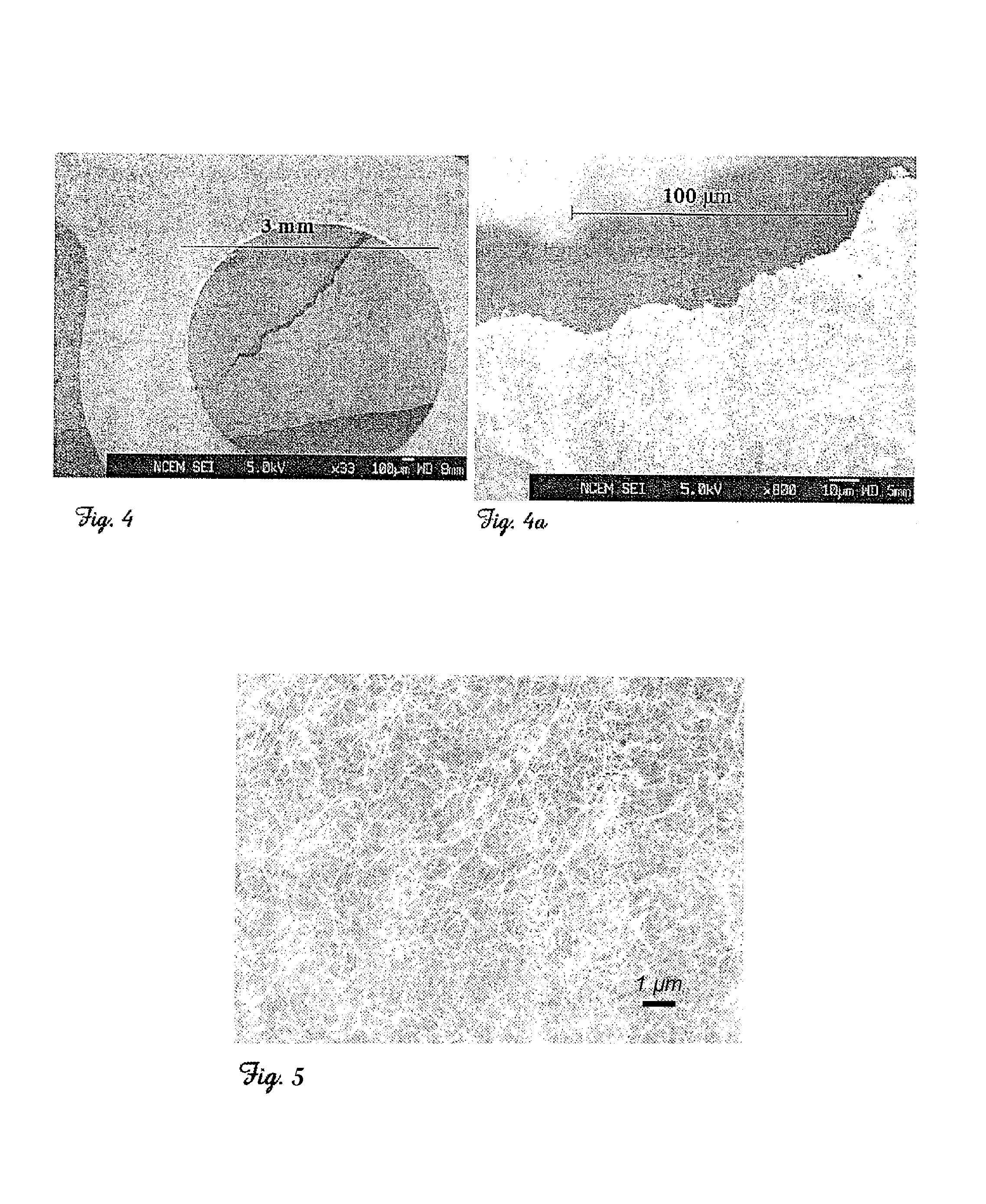Fabrication of carbon nanotube films from alkyne-transition metal complexes
a technology of alkyne-transition metal complex and carbon nanotube, which is applied in the direction of carbonsing rags, material nanotechnology, textiles and paper, etc., can solve the problems of lack of control/determination of metal (catalyst)/carbon (precursor) ratio in the starting materials and/or in the products, lack of control of undesired side products yield, and limited area coverage of nanotube mats. achieve high yield, improve production efficiency, and improve quality
- Summary
- Abstract
- Description
- Claims
- Application Information
AI Technical Summary
Benefits of technology
Problems solved by technology
Method used
Image
Examples
example 1
[0031]The cobalt complex 1 shown in FIG. 8a (Bull. Soc. Chim. Belg. 563 (1987) 96), prepared in a single step from commercial diphenylacetylene and dicobaltoctacarbonyl [Co2(CO)8] can be used. Nickel complexes derived in situ from the commercial nickel(1,5-cylcooctadiene)2 [Ni(cod)2]2 shown in FIG. 8b and diphenylacetylene can also be used. Upon heating, these complexes furnished free standing films made of nanotubes. Specifically, the heating of the transition metal complex is completed at a temperature between 400-800° C. and more particularly 550-700° C. for between 0.1 to 24 hours and more particularly 0.5-3 hours in a sealed vessel under a partial pressure of argon or helium.
[0032]The structure of the films was analyzed in bulk by X-ray diffraction, SEM and HRTEM. X-ray analysis revealed the highly graphitized nature of the film, the characteristic graphite inter-planar distance at 3.4 Å, and the absence of amorphous carbon structures. The surface of the film showed the abundan...
example 2
[0033]In accordance with the present invention, additional carbon sources together with the complexes described above were also found to give carbon nanotubes. For example, hexaphenylbenzene when mixed with transition metal alkyne complexes acted as a suitable precursor for carbon nanotubes. Advantageously, such a modification also acted as a controlling factor for the lengths of nanotubes prepared, with nanotubes produced having lengths at <5 μm. Thus by choosing a suitable complex and carbon source, metal / carbon ratios of <5% were successfully achieved.
PUM
| Property | Measurement | Unit |
|---|---|---|
| temperatures | aaaaa | aaaaa |
| temperatures | aaaaa | aaaaa |
| temperature | aaaaa | aaaaa |
Abstract
Description
Claims
Application Information
 Login to View More
Login to View More - R&D
- Intellectual Property
- Life Sciences
- Materials
- Tech Scout
- Unparalleled Data Quality
- Higher Quality Content
- 60% Fewer Hallucinations
Browse by: Latest US Patents, China's latest patents, Technical Efficacy Thesaurus, Application Domain, Technology Topic, Popular Technical Reports.
© 2025 PatSnap. All rights reserved.Legal|Privacy policy|Modern Slavery Act Transparency Statement|Sitemap|About US| Contact US: help@patsnap.com



